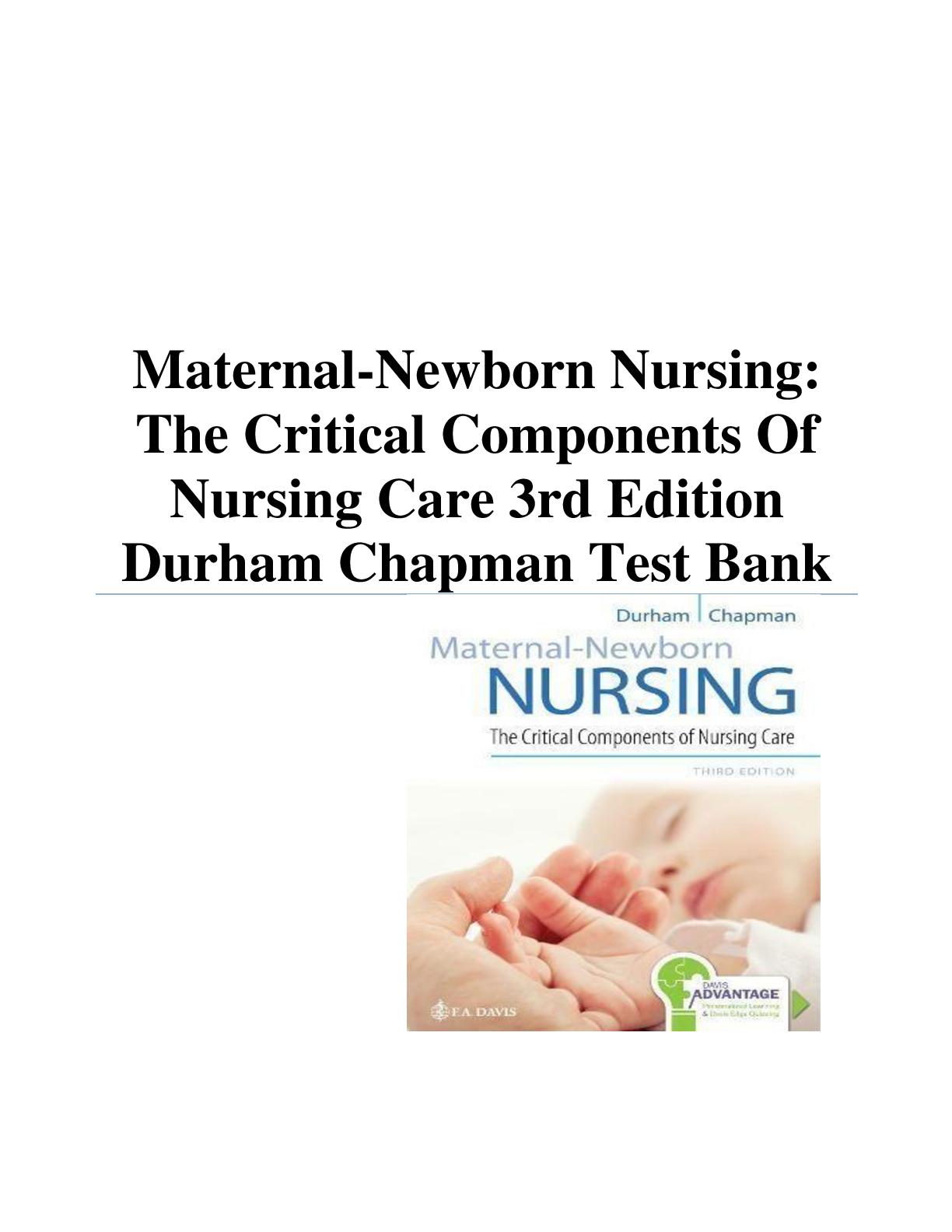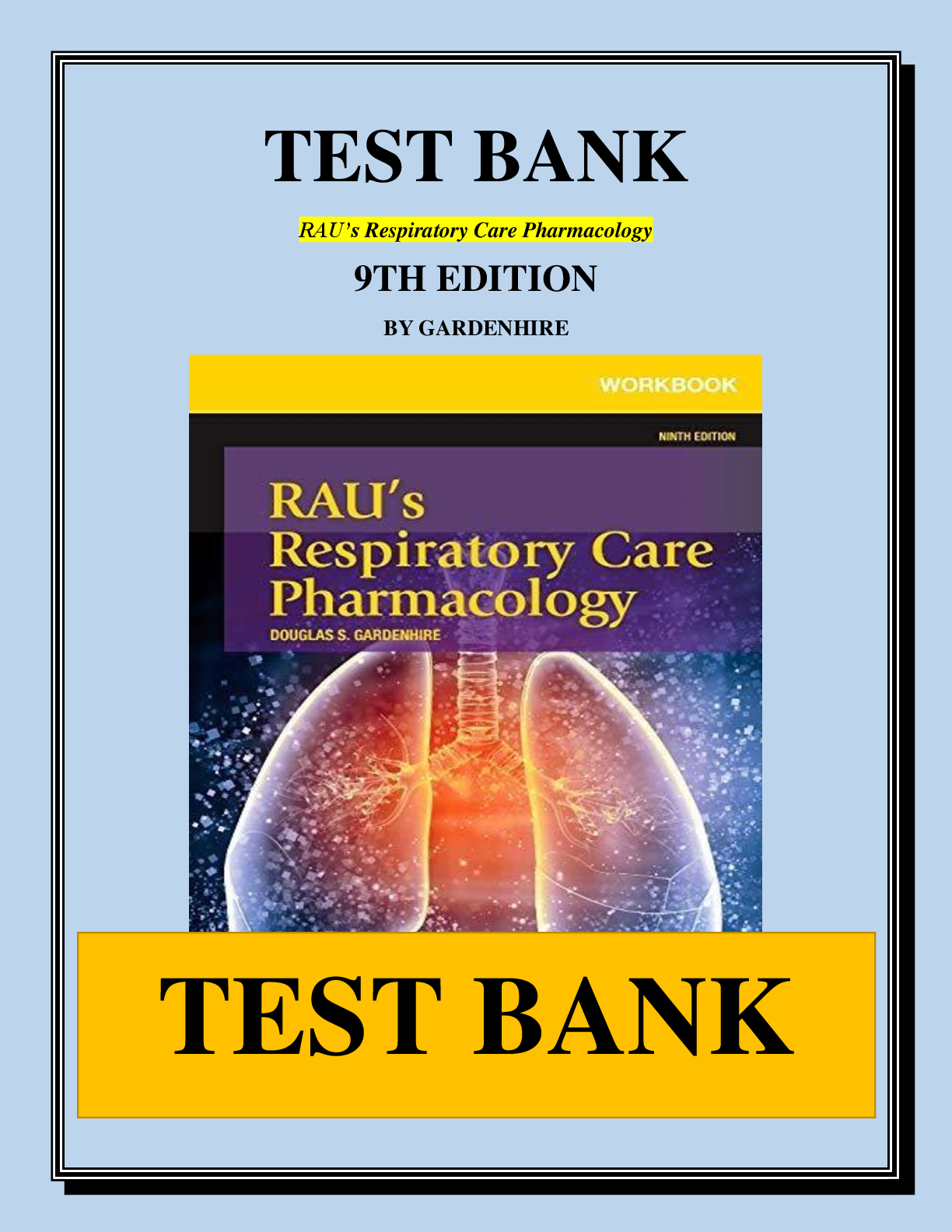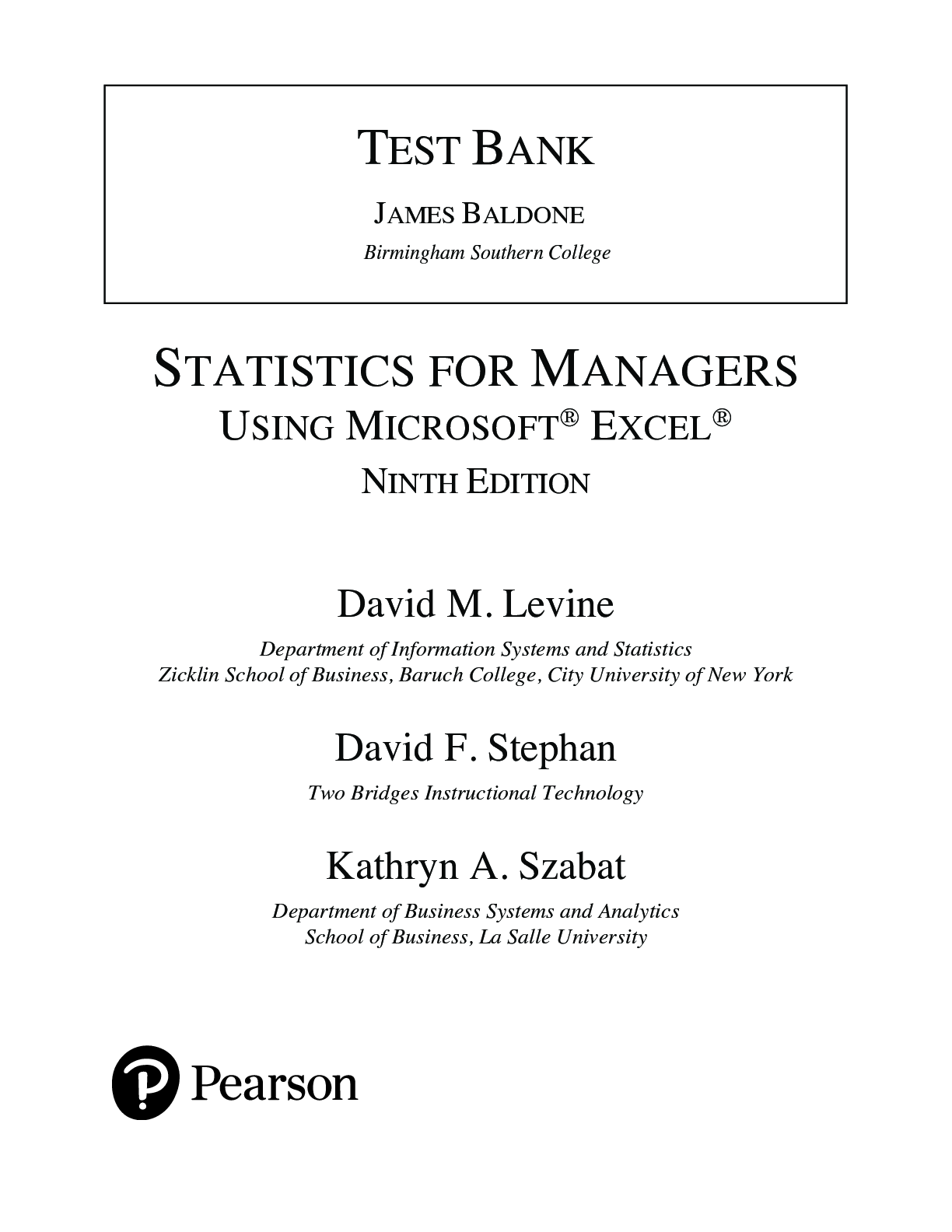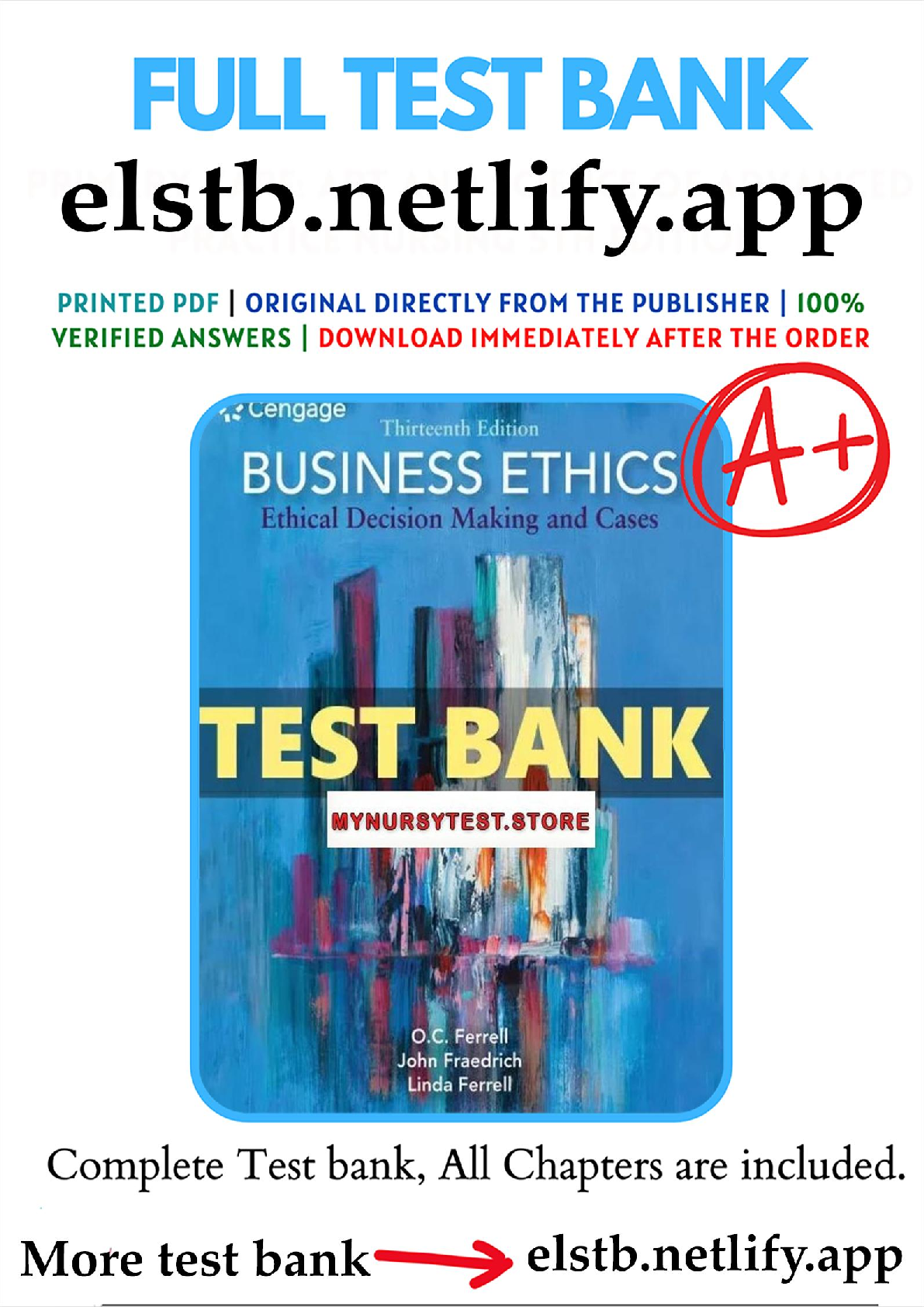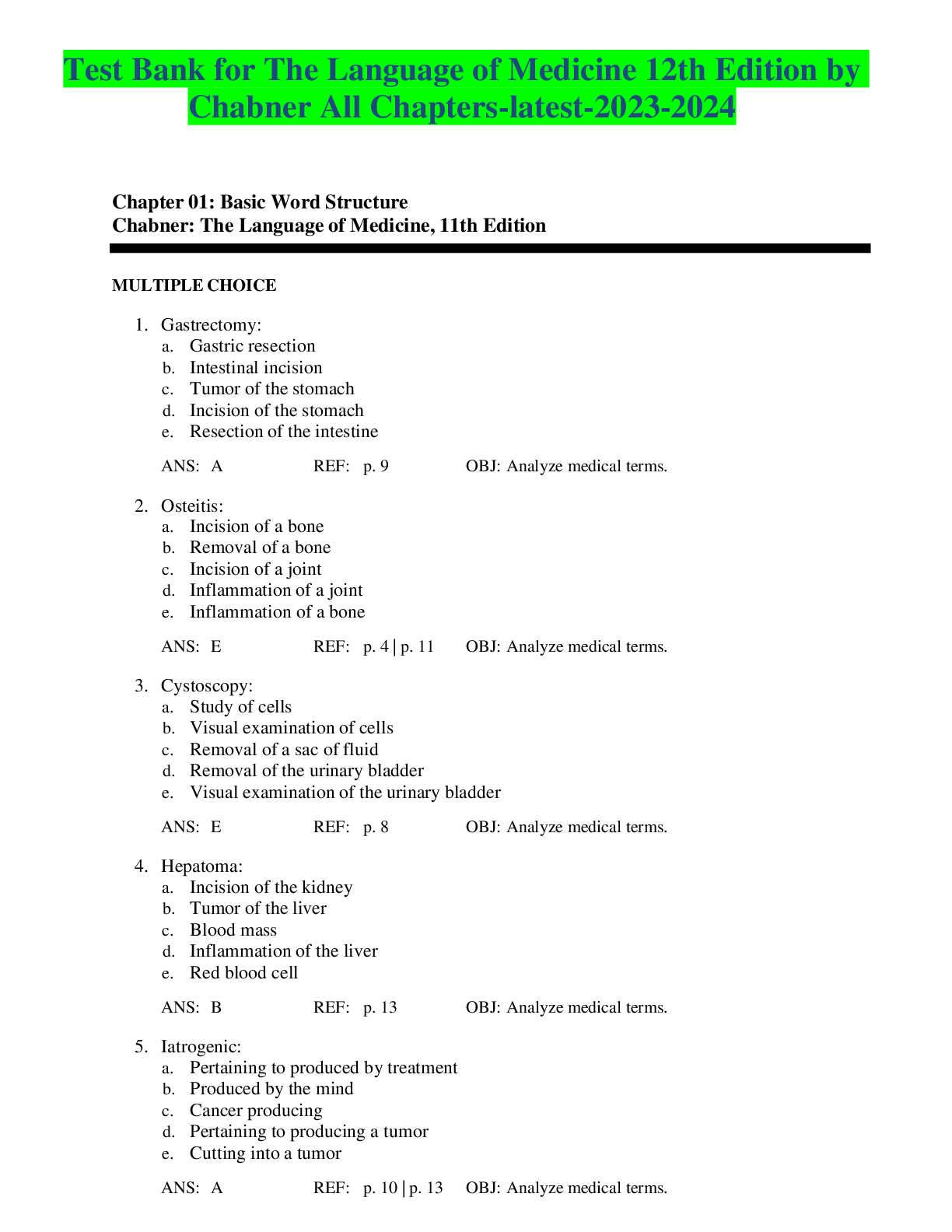Project Management > TEST BANKS > Chapter 13 Project Management Test Bank (All)
Chapter 13 Project Management Test Bank
Document Content and Description Below
CHAPTER 13 Project Management TRUE/FALSE 13.1 PERT and CPM are quantitative analysis tools designed to schedule and control large projects. ANSWER: TRUE 13.2 13.3 13.4 13.5 13.6 13.7 PERT is a determi... nistic analysis tool allowing for precise times of activities within a project. ANSWER: FALSE PERT had its beginnings in a military department of the United States. ANSWER: TRUE CPM is a probabilistic analysis of managing a project. ANSWER: FALSE An event is a point in time that marks the beginning or ending of an activity. ANSWER: TRUE A network is a graphical display of a project that contains both activities and events. ANSWER: TRUE The optimistic time is the greatest amount of time that could be required to complete an activity. ANSWER: FALSE 13.8 13.9 PERT is a network technique similar to CPM, but PERT allows for project crashing. ANSWER: FALSE The most likely completion time of an activity is used to represent that activity’s time within a project. ANSWER: FALSE 13.10 The expected completion time and variance of an activity is approximated by the normal distribution in a PERT analysis. ANSWER: FALSE 13.11 PERT was developed for a project for which activity or task times were uncertain. ANSWER: TRUE 13.12 CPM was developed for use in managing projects which are repeated and about which we have good information as to activity or task completion times. 148Project Management l CHAPTER 13 ANSWER: TRUE 13.13 With PERT, we are able to calculate the probability of finishing the project on a particular day. ANSWER: TRUE 13.14 With CPM, we are able to calculate the probability of finishing the project on a particular day. ANSWER: FALSE 13.15 A PERT or CPM network shows activities and activity sequences. ANSWER: TRUE 13.16 One of the most difficult aspects of using PERT is defining the activities so that they have measurable/observable starts and finishes. ANSWER: TRUE 13.17 Before drawing a PERT or CPM network, we must identify each activity and their predecessors. ANSWER: TRUE 13.18 The three time estimates employed in PERT are: optimistic time, average time, and pessimistic time. ANSWER: FALSE 13.19 In the PERT process, if an activity has zero variance it must be on the critical path. ANSWER: FALSE 13.20 Given the variability of the activity completion time, the original critical path we identify in our PERT analysis may not always be the actual critical path as the project takes place. ANSWER: TRUE 13.21 13.22 In PERT, the activity completion times are modeled using the beta distribution. ANSWER: TRUE In PERT, the earliest finish time in one activity will always be the earliest start time of the following activity. ANSWER: FALSE 13.23 In PERT, the earliest start time for an activity is equal to the latest of the earliest finish times of all of its immediate predecessors. 149Project Management l CHAPTER 13 ANSWER: TRUE 13.24 One of the limiting assumptions of PERT is that for any activity to start, all of its immediate predecessors must be complete. ANSWER: TRUE 13.25 One of the limiting assumptions of PERT is that all activities must be completed at some time during the project. ANSWER: TRUE 13.26 One of the most significant benefits of PERT is that it forces the project manager to sit down and plan the project in great detail – and thus come to an understanding of relationships between the activities. ANSWER: TRUE 13.27 Slack is the time an activity can be delayed without impacting the completion time of the project. ANSWER: TRUE 13.28 It is never possible to delay an activity without impacting the project completion time. ANSWER: FALSE 13.29 The variance of the project completion time is equal to the sum of the variances of all the activities. ANSWER: FALSE 13.30 In PERT, we assume that the project completion time can be modeled by the normal distribution. ANSWER: TRUE 13.31 One PERT/COST assumption is that money is spent at a constant rate over the time taken to complete an activity. ANSWER: TRUE 13.32 PERT helps the project manager understand both which activities must take place and which funds must be expended. ANSWER: FALSE 13.33 A limitation of PERT/COST is the assumption that money is spent at a constant rate over the time taken to complete the project. ANSWER: FALSE 13.34 In CPM, we assume that the cost to complete the task is a linear function of the time to 150Project Management l CHAPTER 13 complete the task. ANSWER: TRUE 13.35 13.36 In CPM, crashing an activity which is not on the critical path increases the cost of the project. ANSWER: TRUE In CPM, if we are going to crash an activity, we should crash it to the maximum extent possible. ANSWER: FALSE *13.37 In CPM, crashing an activity which is not on the critical path reduces the cost of the project just as much as crashing one on the critical path. ANSWER: FALSE *13.38 One of the drawbacks to using either CPM or PERT to manage an actual project is the amount of data that must be collected over the life of the project to implement either method. ANSWER: TRUE *13.39 In PERT, the variance in completion time is equal to the variance of the most time consuming activity on the critical path. ANSWER: FALSE *13.40 Given the assumptions in PERT, the probability that a project will be completed in less time than required by the activities on the critical path is approximately 50%. ANSWER: TRUE *13.41 One should always wait until an activity’s latest start time before commencing the activity. ANSWER: FALSE *13.42 Using PERT/COST, one is able to complete the project for less money than using PERT alone. ANSWER: FALSE [Show More]
Last updated: 1 year ago
Preview 1 out of 67 pages
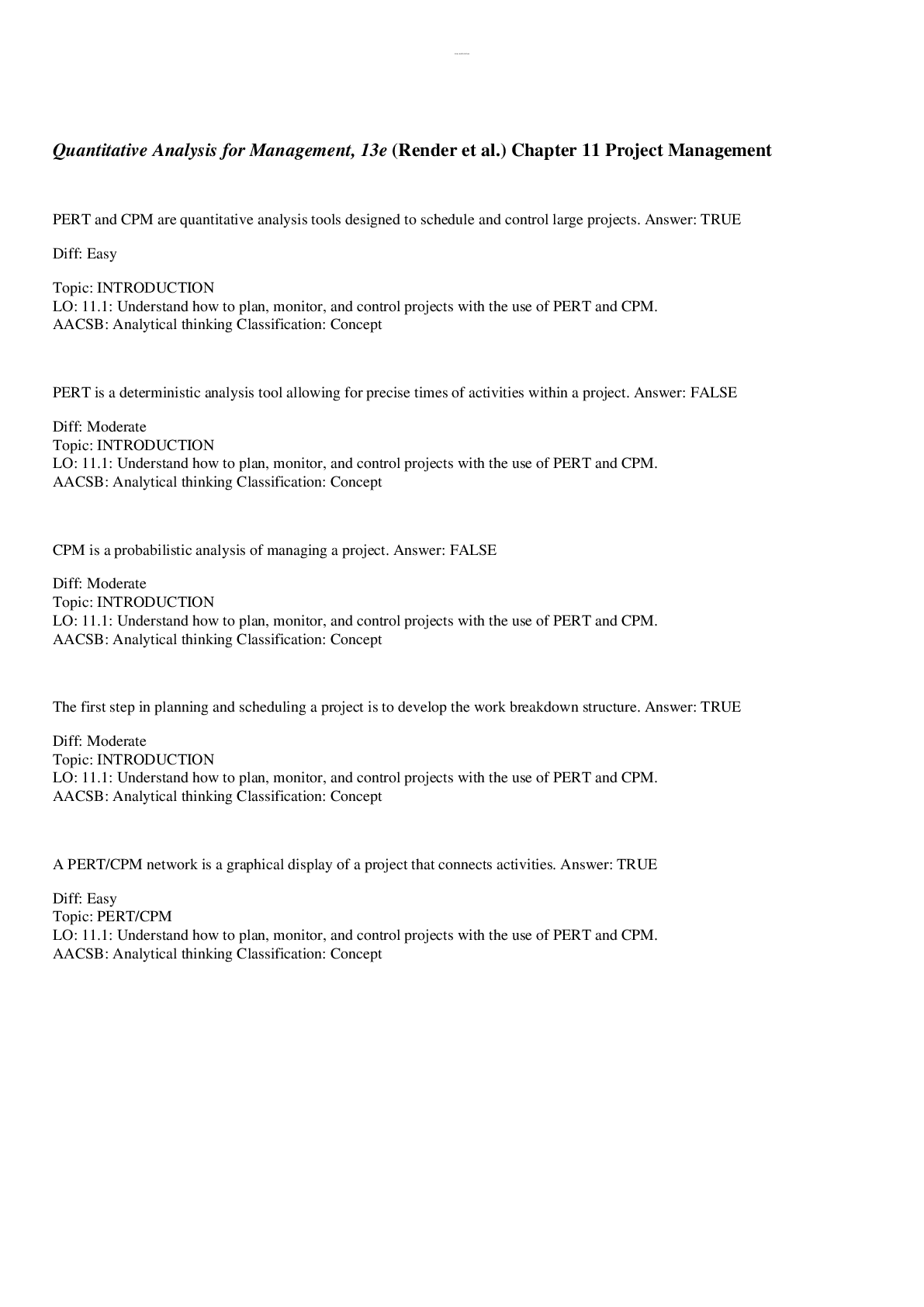
Buy this document to get the full access instantly
Instant Download Access after purchase
Buy NowInstant download
We Accept:

Reviews( 0 )
$7.50
Can't find what you want? Try our AI powered Search
Document information
Connected school, study & course
About the document
Uploaded On
Aug 15, 2023
Number of pages
67
Written in
Additional information
This document has been written for:
Uploaded
Aug 15, 2023
Downloads
0
Views
118



